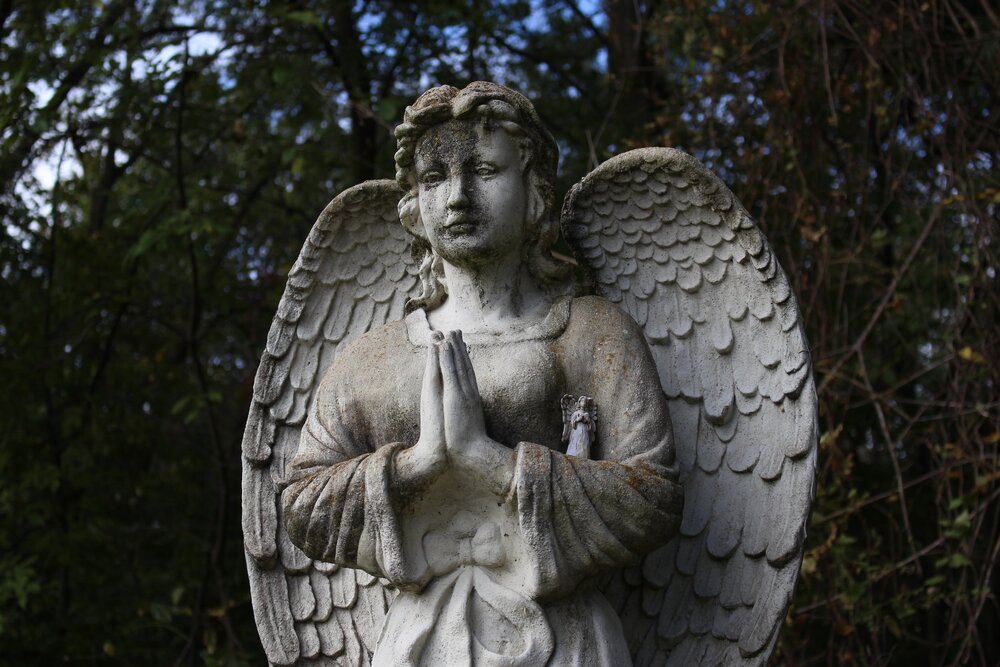A Western View on Death

“You matter because you are you, and you matter to the end of your life. We will do all we can; not only to help you die peacefully, but also to live until you die.”
~Dame Cicely Saunders
Life in Minneapolis, and by extension, the broader tapestry of Western society, has always been shaped by a rich history. One of the most profound constants throughout our shared heritage is our relationship with death. By understanding the evolution of Western perspectives on this inevitable passage, we can better appreciate the present “Death Positive” movement, offering solace, empowerment, and a deeper connection to life’s most profound moments.
Ancient Greece and Rome: Death as a Natural Transition
Historically, ancient civilizations such as Greece and Rome viewed death as a mere extension of life. It was neither inherently good nor bad—it simply was. These cultures celebrated the belief that the soul persisted, even after the physical body ceased to exist. Intriguingly, the idea of rewards or punishments in the afterlife wasn’t as dominant, emphasizing the importance of living a virtuous life for its own sake.
The Middle Ages: Judgment and the Afterlife
With the rise of Christianity during the Middle Ages, the narrative surrounding death began to shift. Death no longer simply continued life; it became a gateway to the afterlife where deeds faced judgment. Religious institutions took a pivotal role during this era, cared for the dying, and reinforced the idea that one’s earthly actions determined the soul’s fate.
Renaissance and Enlightenment: Return to Rationality
As society moved towards the Renaissance and Enlightenment periods, the fascination with life and human potential saw a renaissance of its own. While spirituality remained essential, there was a revived focus on understanding death from a philosophical and scientific standpoint. This era brought forward the idea that preparing for death was both rational and a natural part of life’s journey.
19th and 20th Centuries: Medical Advancements and the Fear of ‘Failure’
Fast forward to more recent history, where the landscape of death underwent significant transformations. With the dawn of groundbreaking medical discoveries, the possibility of prolonging life became tantalizingly close. Ironically, as medical science triumphed in many areas, death began to be seen as a ‘failure’ of sorts. The topic became somewhat taboo, a stark contrast to previous eras.
Modern Day: Seeking a Balance
In the midst of our fast-paced lives, there’s a resurging need for understanding and embracing death, as both an art and a science. This is evident in Minneapolis’s evolving attitudes and indeed across the broader Western sphere. The “Death Positive” movement, which we champion with a calming and reassuring voice, is gaining momentum. It emphasizes open discussions about death, holistic end-of-life care, and the importance of intertwining emotional, spiritual, and practical preparations.
In Conclusion
Our collective journey through history, especially regarding our perspectives on death, shapes our present-day beliefs and practices. By understanding where we’ve come from, we can approach death with a renewed sense of purpose, compassion, and clarity. When we engage in this conversation, we embrace each moment, ensuring that our journey – and the journeys of those we love – fills with understanding and peace.
In the heart of Minneapolis and the broader Western world, let’s continue championing a balanced, compassionate, and enlightened view on life’s final chapter. And, as always, I invite you to share your reflections and thoughts below.
Until our next exploration,
B.
May 17, 2023
- Laurie J.
The additional grief doula training Beth has completed makes her service unique, as she is able to offer additional insight and support for families as they move through bereavement. As a fellow end-of-life doula, I endorse the care that Beth provides, and refer to her patients I’m unable to accommodate. Compassion, firsthand experience, and her willingness to go above and beyond make Beth’s doula practice a great choice for any family.
testimonial
Beth’s background in caring for her mother at end of life gives her a unique perspective on not only the needs of the patient, but also the needs of the family.
As an End-of-Life Doula, I am not a medical professional and cannot and do not offer medical advice or care.
Based in Plymouth, Minnesota
@compassionatetransitions
You can view my profile on the Grief Support Center National Directory, a resource connecting people to grief support professionals nationwide, here: Grief Support Center Profile
COPYRIGHT 2023 COMPASSIONATE TRANSITIONS | BRANDING & WEBSITE BY THE MUG CREATIVE
PRIVACY POLICY